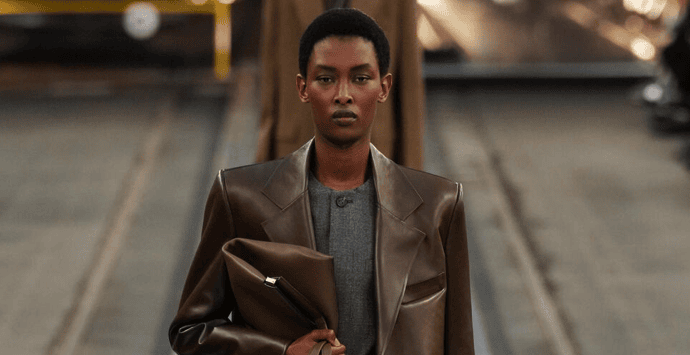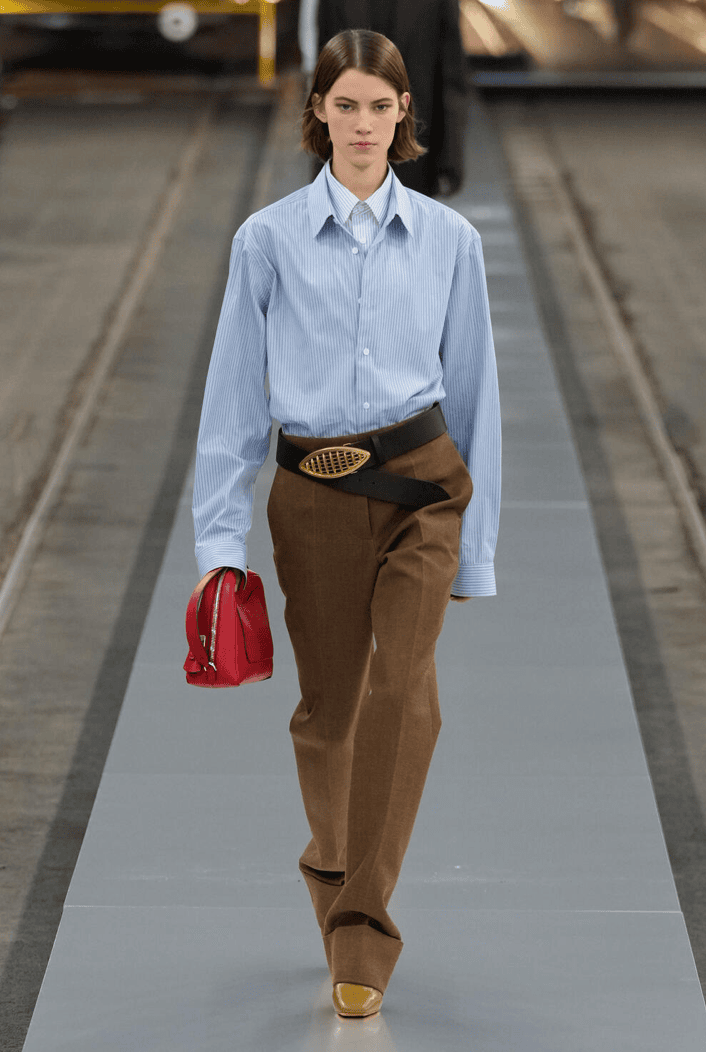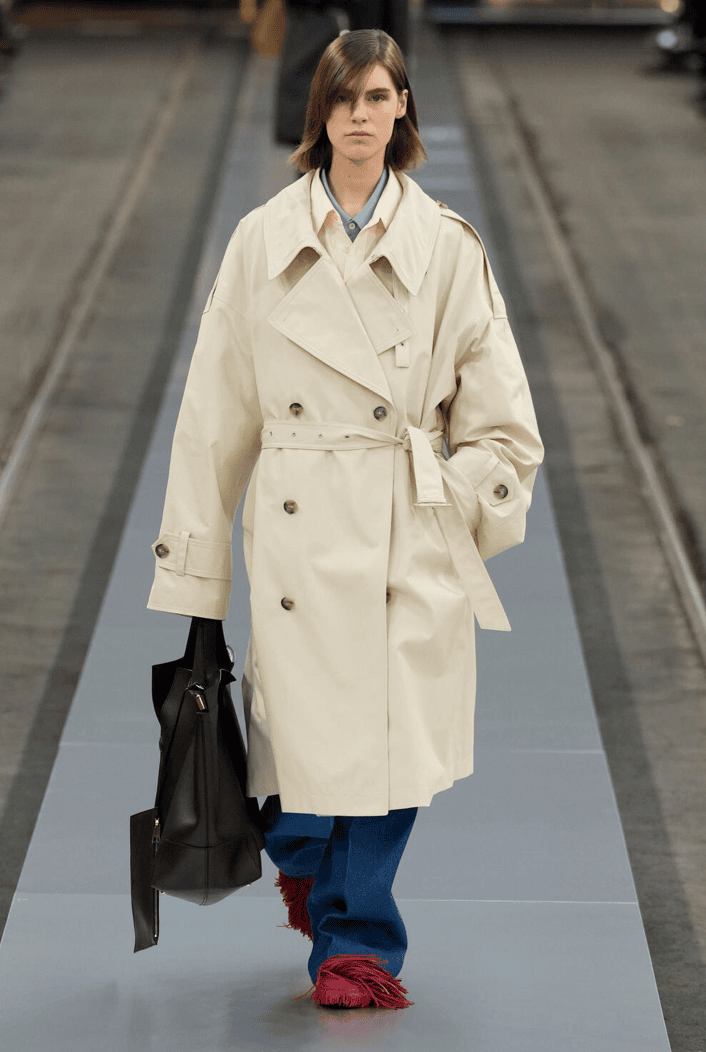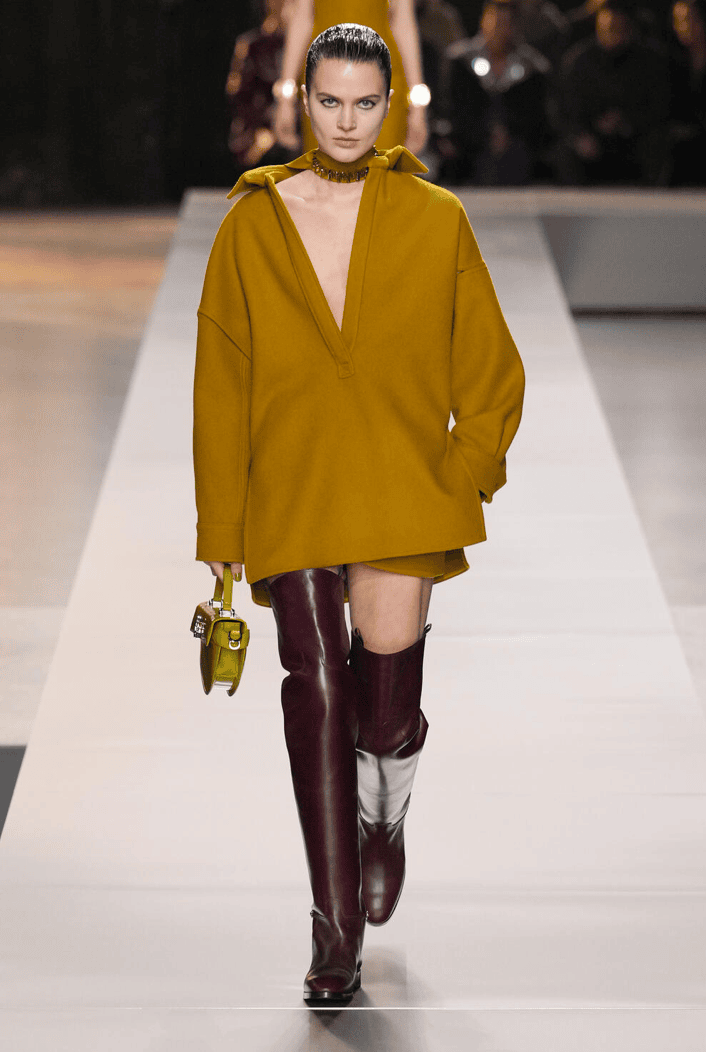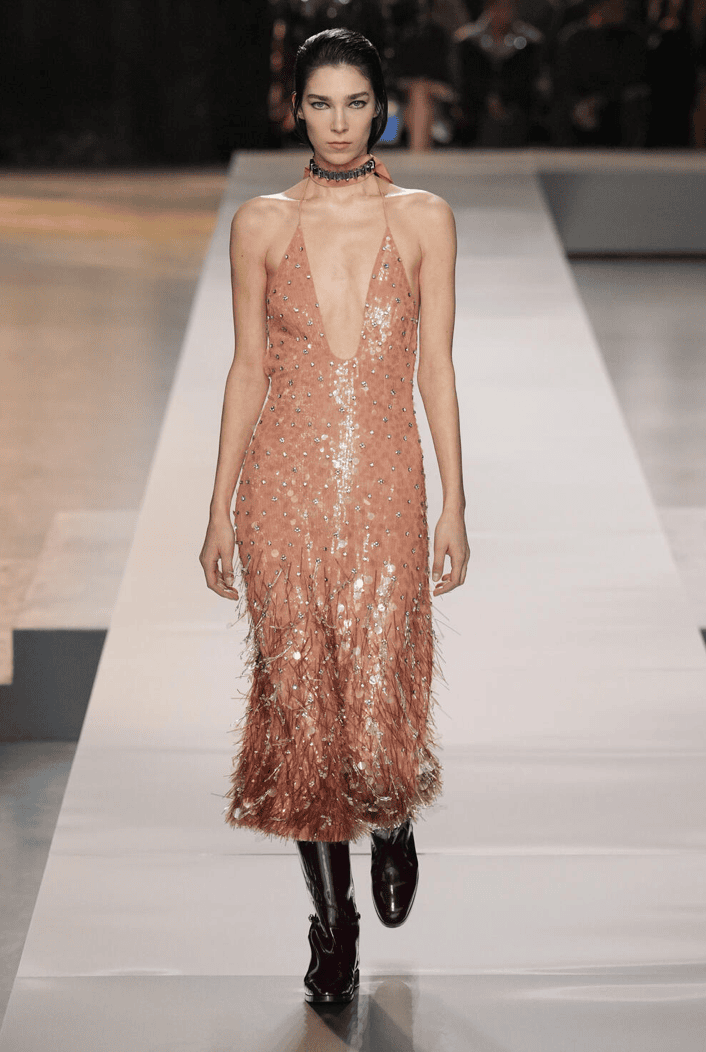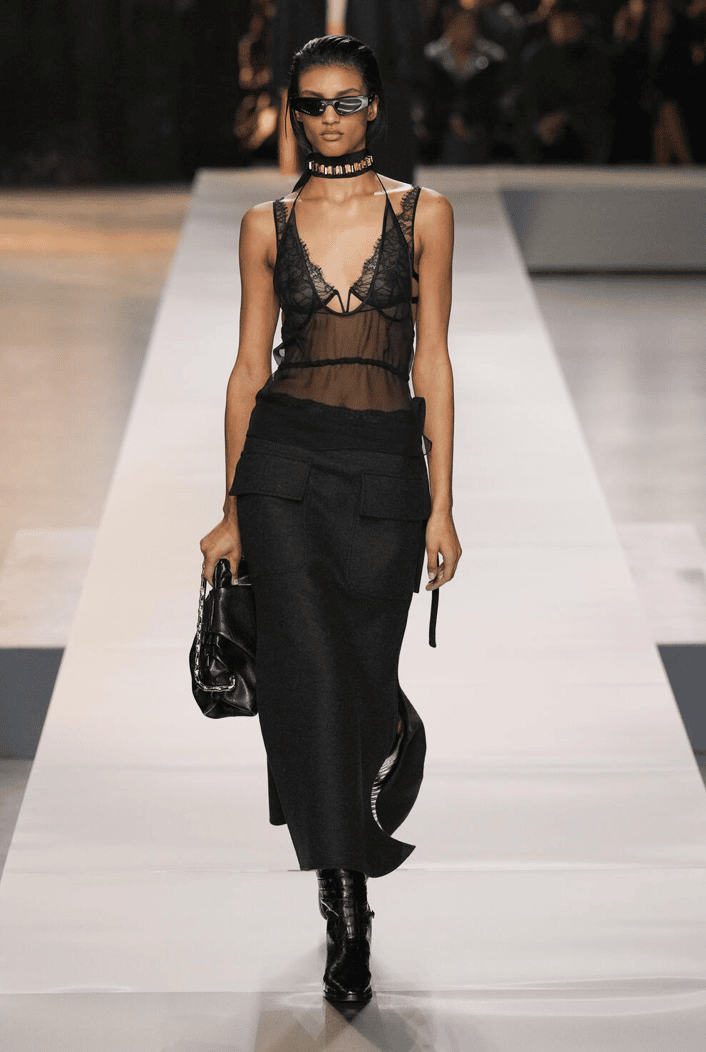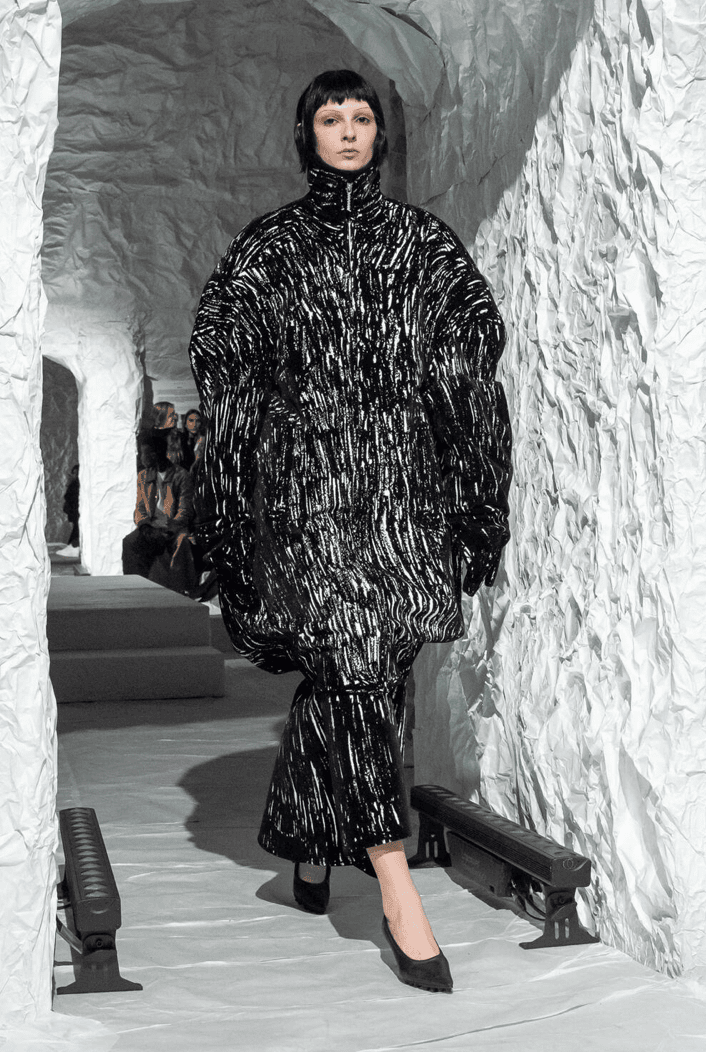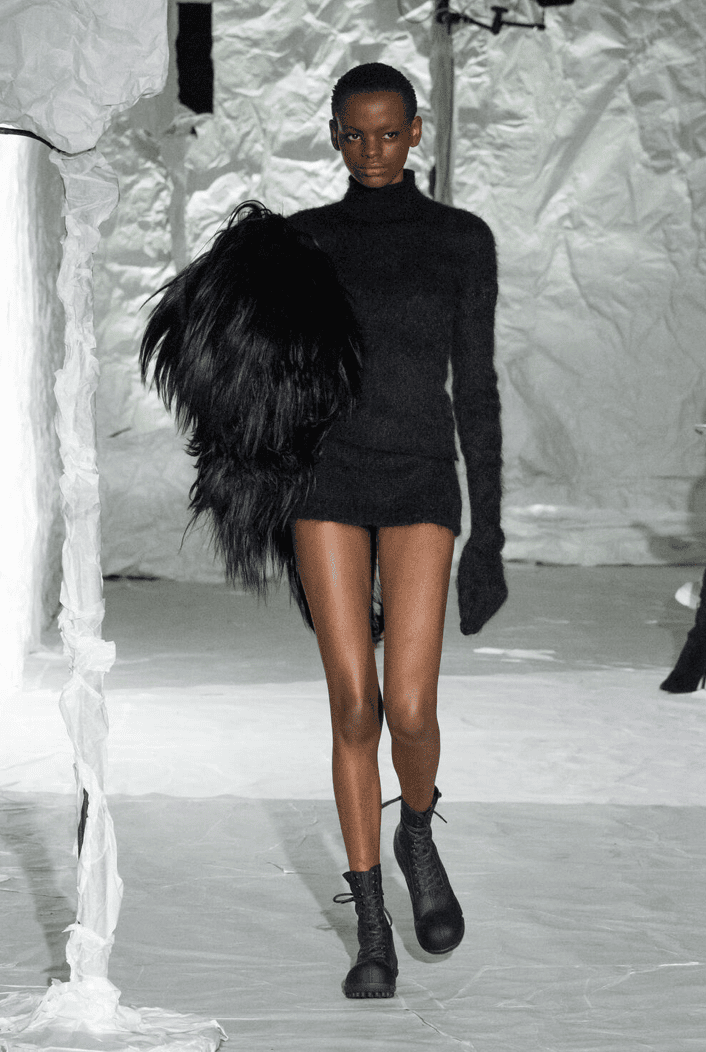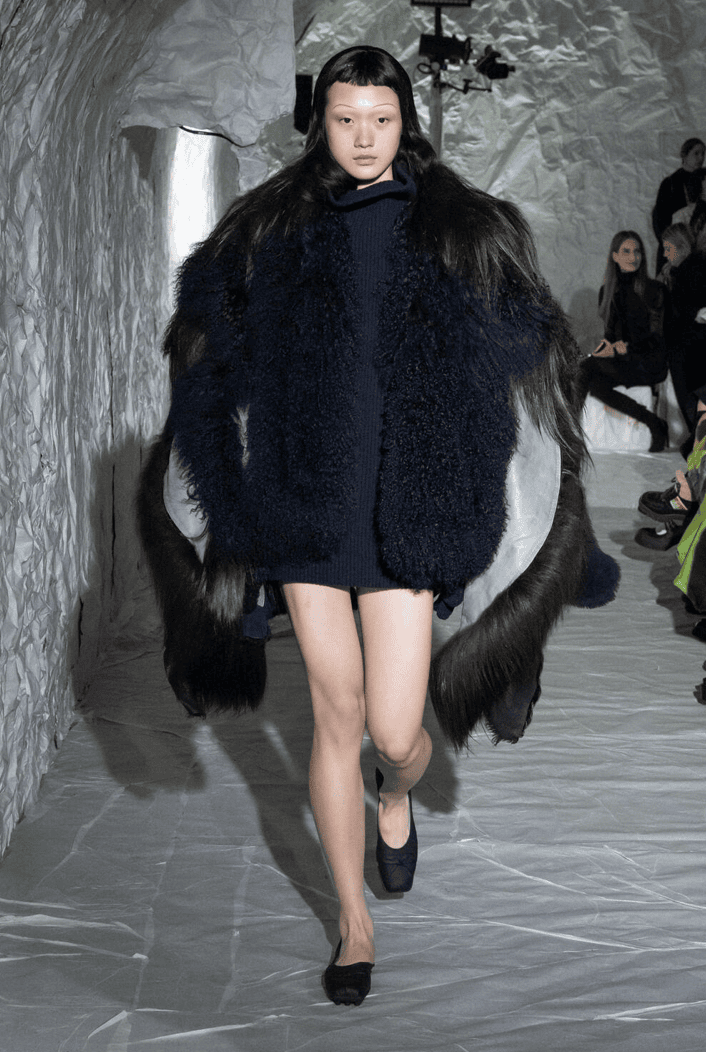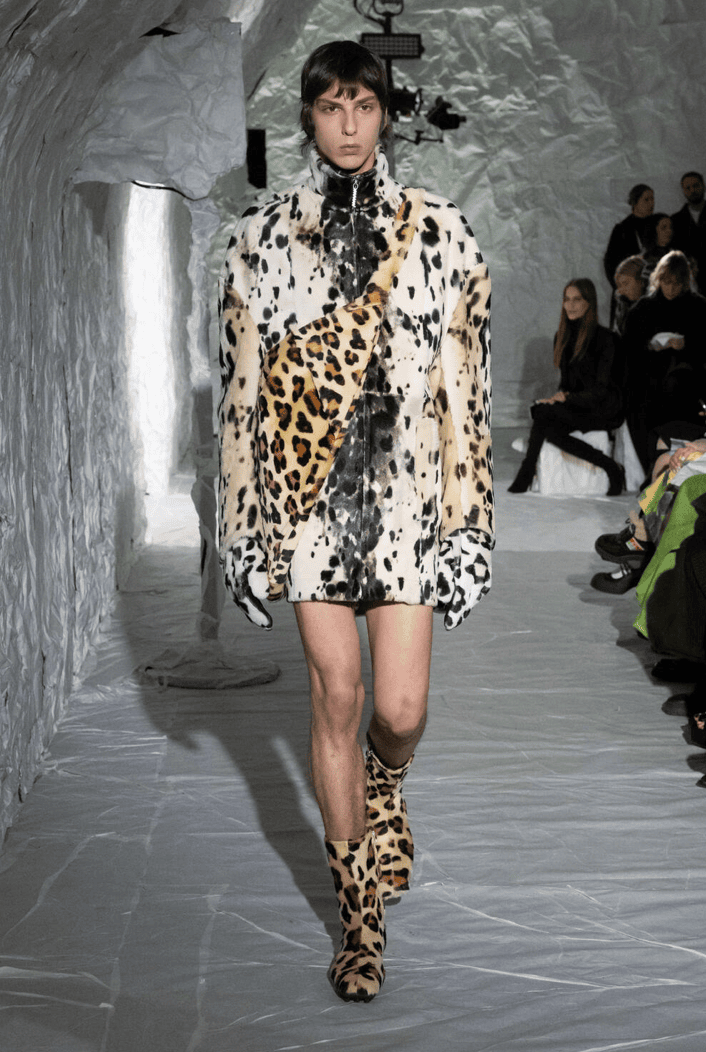On the third day of the Milan shows, the eagerly anticipated Tod’s show kicked off the day with an early start. Held in the city’s tram depot, the debut collection by Matteo Tamburini proved to be a promising beginning–for both the day’s inclement weather, and the brand.
Tamburini’s opening offer echoed the essence of an Italian futurist painting, showcasing a geometric structure. The ensemble consisted of poplin striped shirts, cleverly double-layered in the styling, and paired with constructed trousers. Despite the absence of belt loops, the latter were skilfully matched with low-rise belts adorned with hardware inspired by automotive grilles. The automotive motif persisted as a consistent theme, manifesting in the men’s looks through driving shoes that, while adopting the shape and stitching of loafers, remained quintessentially Tod’s driving shoes with their distinctive soles.
Tamburini offered a playful touch that extended from footwear, where some shoes showcased voluminous leather fringes, through occasional bursts of glossy red and exaggerated silhouettes notably seen in trench coats. Skirts adorned with sleeves cascading at the hem, akin to a jumper, offered a fun side to Tod’s otherwise refined aesthetic.
Naturally, bags made a strong point in the collection, complementing nearly every ensemble. The runway bore witness to toolbox bags, their buttery textures accentuated by fur panels. Tote bags took on the form of garment bags, while some men’s looks featured dangling leather envelopes.
Crafting Modernity
Sabato De Sarno deployed his vision for Gucci for a second time in the Fonderia Carlo Macchi in the outskirts of Milan.The elevated runway, resplendent in glossy aluminum, mirrored the aesthetic of the recently renovated Gucci stores in London, Milan, New York, and Seoul, which underwent a revamp from renaissance opulence to sleek modernist sensibility.
De Sarno’s modernist philosophy leans heavily on the enduring quality inherently tied to durability, a principle he has consistently underscored since his men’s show. His focus revolves around crafting garments that not only excel in construction but also demonstrate prowess in terms of textile quality.
For Fall/Winter 2024, De Sarno maintained the short silhouette that started with his debut in September last year. In his sophomore collection, the opening look of a bar-like jacket, shorts and thigh-high boots set the tone for the progression that followed—a set of rompers and bodices that didn’t fear revealing a good portion of leg.
At Gucci, the decorative is handled meticulously and with measure, considering the saturation that played a pivotal role in De Sarno’s appointment to the house. Embellishments were kept in check, appearing only as stitched paillettes in an array of midi dresses, knitted sets and coats. The latter were given special attention, given Sabato’s affinity for crafting a good coat. These appeared in the style of peacoats, others featuring expansive lapels in cashmere, while others featuring a curved pattern were made in Ancora red python skin.
For the return of Marni to Milan, Francesco Risso brought no clothes, but objects imbued with the memories and echoes of clothing. The designer drew inspiration from Virginia Woolf’s iconic letter, where she urged friends to attend a weekend retreat, and “bring no clothes,” as means of encouraging them to depart from societal norms, to shed not just garments but also the constraints of social conventions and embrace their authentic selves.
For the exercise, Risso proposed a reset, and avoided visual cues, mood boards or references. And so the team was tasked with designing just based on their memories of Marni. Thus emerged a myriad of self-references, including odes to Consuelo Castiglioni’s exaggerated shapes. Bell-shaped dresses opened the show, some accessorised with fundamental Marni elements like Mongolian fur scarves, oversized bags or exaggerated gloves.
Textures were turbulent, blurred or faded, just like memory itself. The final outings embraced the concept by featuring hand painted brush strokes that gave the illusion of cluttered feathers. The technique was applied on trousers and dresses, and a version was recreated also for pumps and boots. In a play of deception, one of the final ensembles featured a fur coat hand painted to achieve a feather-like finish.
Risso emphasised on wanting no distractions from the actual clothes. Both the design studio and the runway mise-en-scène were enveloped in pristine white paper, so that the focus would remain in the intricate yet subtle detailing of the clothes. Every sign of construction and detail embraced a philosophy of invisibility or minimisation. Buttons melded into the stitching, seams went unnoticed, and only zippers were used to impart a sturdy touch to the austerity that defined each piece.
